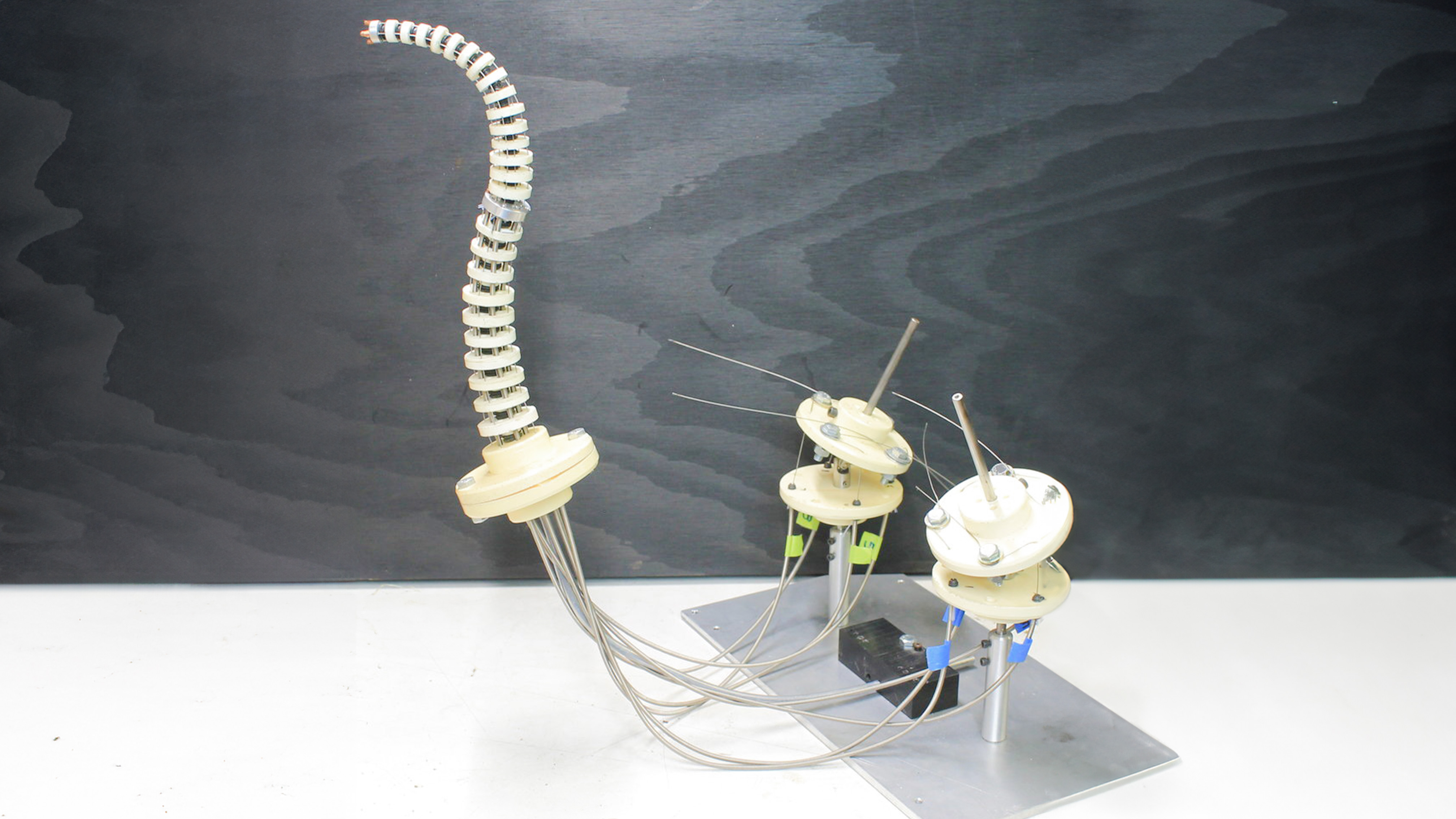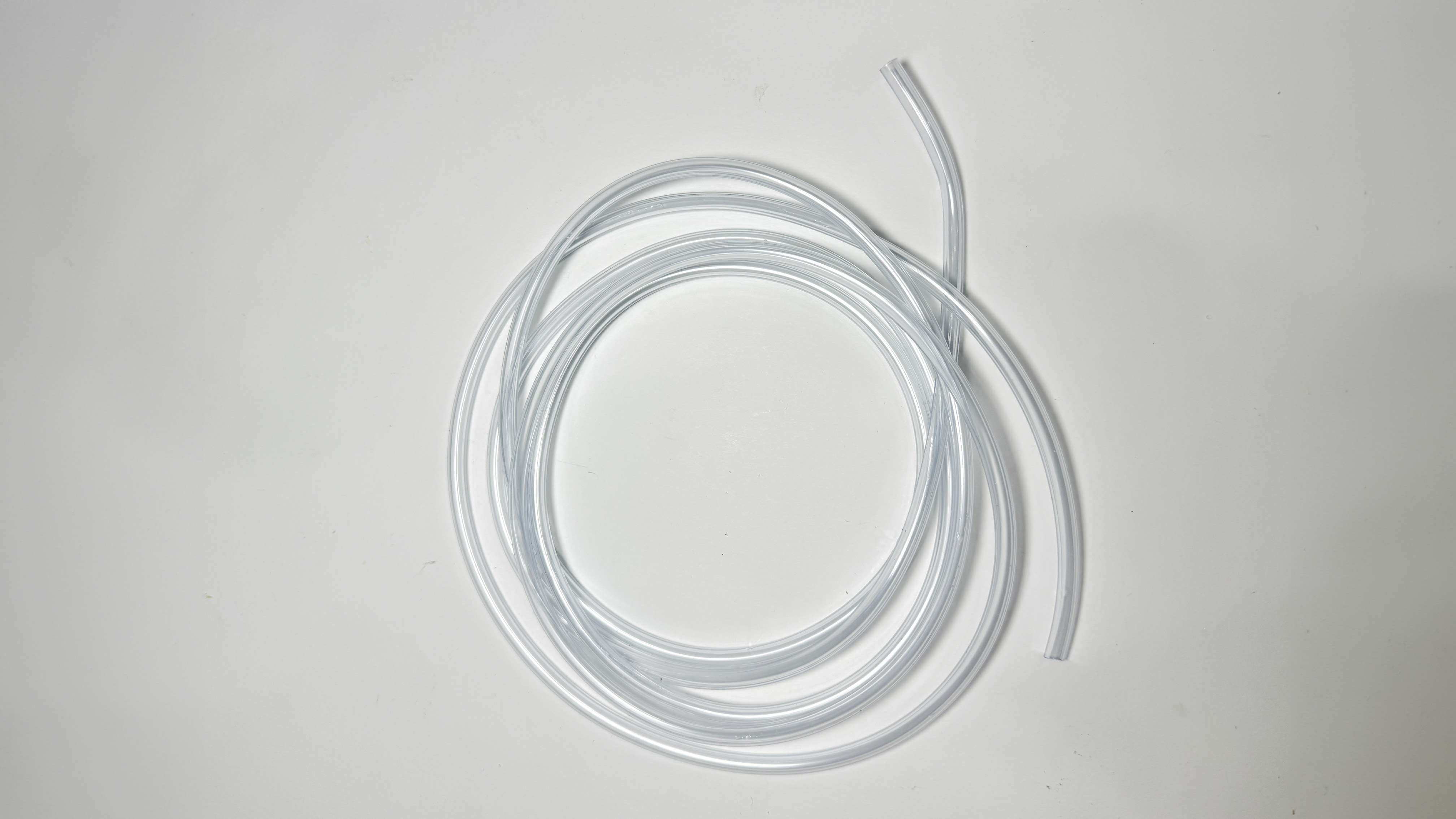
Tentacle Mechanism www.poormansguidetoanimatronics.com/blog-1
Week 2 & 3
This week, I conducted more motion tests. I was doing study on the two segment mechanism this past week. I was curious about how it was made because I thought the movement it produced was really fascinating. I then go online to see additional pictures and try to understand how the mechanism functions so I can replicate it.
Experimentation
After more research, I figured out the basics of how it worked. I went to purchase some
rubber tubes that act as the skeleton of the structure.
I made a round disc out of plastic and pierced three holes in it. Two at the side where
strings pass through, and one in the centre where the plastic tube passes through.
This mechanism bends the tube forward by creating tension by the tugging of the strings.
This essentially outlines the fundamental architecture of this mechanism. More advanced
setup calls for the construction of a base to house the mechanism and a part to draw the
string.
Undoubtedly, the structure has to be improved after the mechanism is finished. Since the
tube I use is somewhat curved even when it isn't bent, I figured I should consider this
the next time I construct it.



Dissertation Progress
Eventually, while I worked on my dissertation, I completed revising and reconstructing my research goal, techniques, and literature review. With the base of my dissertation completed, I can finally start on my discussion section. The lack of time definitely stresses me out a little as I only have 4 weeks remaining to complete my paper. The fact that I still didn't have a prototype that I could utilise for user testing made me recognise how stuck I was and made me nervous. My lack of time was all my fault, so I decided to trust the process and just start writing my dissertation to see where it takes me.
Some of the things I discovered while writing seemed like a nice place to start for what
I wanted to create. I would like to test some of the recommendations and some excellent
questions that I found on this page against user testing and prototyping. Among the
inquiries that were raised were:
Why should people use your product?
How long do you need their attention?
Why do you want their attention? Are users accomplishing a task or looking for
information?
What else is competing for user’s attention during use?
What additional information or help do users need to make the experience
self-explanatory?
Designing For Attention www.smashingmagazine.com/2020/09/designing-for-attention/
When designing for attention, there are a few important strategies that are highlighted
on the website that could aid maintain focus.
First, there is
Motion. Motion is a reliable, scientific method of capturing people'
fleeting attention. Something always catches our attention when it quickly enters our
peripheral view.
Second, there is scientific support for Sound
as a strategy. Beyond visual stimulation, sound is helpful. Users' transient attention
can be briefly drawn to a change in status by using sound, and we can utilise music or
narration to keep users' attention. We can make a powerful impression by fusing sound
and pictures.
Freedom of Motion Nike free run+ installation

The Cyclical and The Linear Kate Carr
Removing distractions or clearing the cutter is the
third strategy. You must give people an instant wayfind to hold their attention when we
want them to comprehend something and take action, possibly on an unfamiliar interface
for a specific goal. Users are more prone to lose attention spans when they have to
guess their way through tasks in order to reach the end result, especially when the
stages or directions are unclear.
Finally, there is
gamification. Products from several industries have figured out how to
make their experiences more playful to keep consumers' interest. Education researchers
have discovered that gamification components may help students pay more attention to
lectures and other content that requires focus to process. When consumers actively
interact with content, you are more likely to maintain their attention if you give them
something to do. One way to give users something to do is through gamification.

The Journey Canada Goose, Sherway Gardens Mall, 2019

Nike Camp Victory 2012 United States Olympic Trails for Track & Field
With that, I believed I could make a game that would involve my users in my experience. Previously, audience had to figure out a precise sequence utilising a code to turn on the led in my prototype. My suggestion is to make a sequence game where a certain set of sequences is to be shown, rather than having people guess. The user would then input the sequence to match what was presented after a set of sequences was displayed. The sequence would grow once each round was over, making the game harder. The sequence would begin at 4 and increase to 8 in the last round, with 5 rounds total. The game is over when round five concludes.